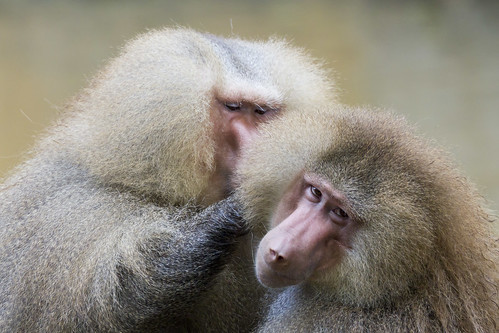Anyone who has studied psychology to a reasonable extent can tell you that it is not a unified field. As things currently stand, it is divided up into a number of different areas such as social, developmental, evolutionary and cognitive etc. This is due to the fact it is very new science (or social science is more apt) and is still finding its way in terms of having a single theoretical foundation and being truly scientific, i.e. not merely a reflection of the researcher's personal value system. Indeed, psychology did not exist till Freud effectively invented it as a form of treatment for patients suffering from 'hysteria'. Freud set out to create a complete theory of man - a very ambitious project (to say the least) considering the state of technology at the time. Even now, with fMRI scans the depths we can probe into the actual workings of the mind is very limited. But this did not prevent Freud having a go and coming up with some key concepts such as transference, projection and displacement.
For Freud, displacement behaviour meant something slightly different to what I mean in my blog. He was using the term to describe a behaviour that is expressed when the desired behaviour has been repressed and which the individual may not even be conscious of. So, in the Victorian era when sex was taboo (at the public discourse level - privately, they were at it like no one's business!) Freud came across many cases where sexual desire could not be expressed directly. As a consequence he noted behaviour got channeled into alternative actions and from this he was able to recognise fetishes in his patients.
In this blog my use of displacement behaviour is derived from ethology (study of animal behaviour) and links to the work of pioneers like Tinbergen. He was one of the first people to notice that some behaviour does not always fit the context in which it emerges and is therefore hard to explain in terms of its relevance to the situation. An ethological definition does not assume, as does Freud, that all behaviour is merely a spill over from a single repressed drive, such as the sex drive or libido. Several theories in the field of ethology exist in an attempt to explain behaviour that
seems to have no functional purpose. This can include spill over theories but also includes:
disinhibition theory - in animals when incompatibility between behaviour patterns occurs, underlying patterns that otherwise are inhibited become expressed e.g. preening, pecking etc. A variation on this hypothesis (McFarland) is that when frustrated (i.e. an action does not produce the reward or effect on the environment expected) animals switch their attention to stimuli other than that eliciting the ongoing activity. Displacement behaviour marks this switch of attention and suggests that when an animal is only partially rewarded for an action it is more likely to attend to wider or incidental stimuli. The displacement behaviour may also indicate the existence of a conflict between the established pattern of behaviour and an environment in which the established behaviour has failed to produce the reward expected or required.
dearousal theory - my own position is that displacement behaviour is a means of homeostasis. In other words, the behaviour helps to regulate the internal state of the animal when in a challenging environment. For example, a hungry cat frustrated by an empty food dish will often start to groom itself. (I see it as a cat's mode of waiting for its meal.) The grooming is a displacement behaviour that does not help the cat obtain food but enables it to regulate itself in relation to its non-rewarding environment. The self-directed behaviour serves to attain a mental state non-dependent on the wider environment but as a consequence of the lack of reward from the said environment. It is a way of regulating arousal until environmental conditions (or the adaptive effect of behaviour) are more conducive.
Overall, I take an evolutionary approach to displacement behaviour. This means that I see the brain as an organ that pursues goal states e.g. safety, comfort, sex, food etc. Each goal state is inextricably related to behaviour patterns which normally are successful in achieving the desired effect of meeting the organism's needs and supporting its well being. Psychology then is the study of how an organism's evolved mindset or mentality links to its actual behaviour within the modern environment it finds itself. Indeed, the brain is the organ that is constantly monitoring the state of the organism both internally (e.g. heart rate, oxygen levels) but also in terms of its relationship to the external world (danger, mating opportunities, food availability etc). In short, its business is to monitor and regulate the ongoing relationship with the world. From going to the fridge for a drink, to approaching someone at the disco, to putting an extra blanket on the bed - these are all brain state driven actions that man has been pursuing in one way or another since time immemorial. Again, this marks a different focus from Freud whose theory derived from the immediate socio-historical context of his time and not from evolutionary history.
The problem for any organism is when the environment does not support its psychological requirements. In other words, no behaviour can be found that adequately achieves the goal states that constitute the organism's being or its nature. And this is what this blog is really concerned with - the displacement behaviours that emerge to regulate a situation characterised by disharmony or disruption between stimuli and mental states.

No comments:
Post a Comment
Please leave your comment below: